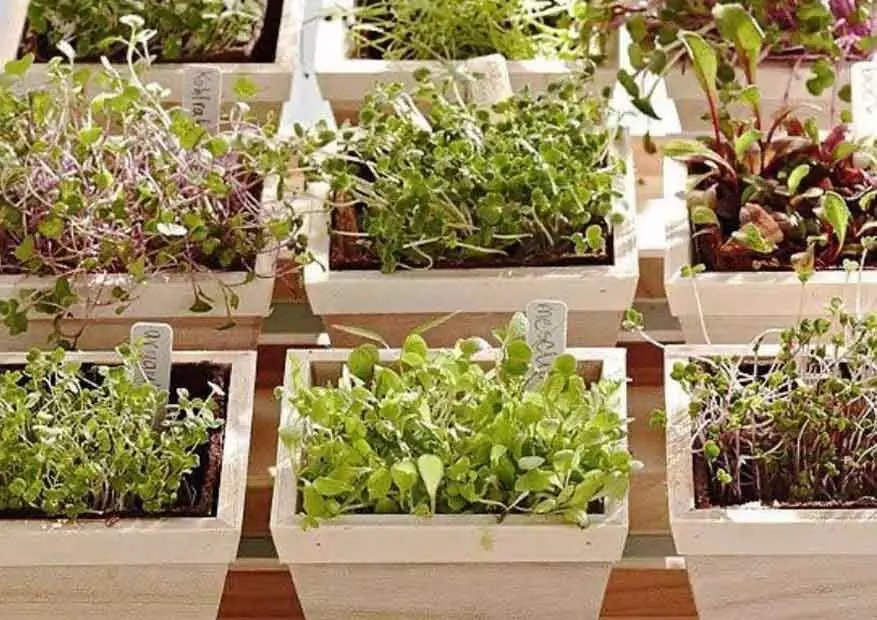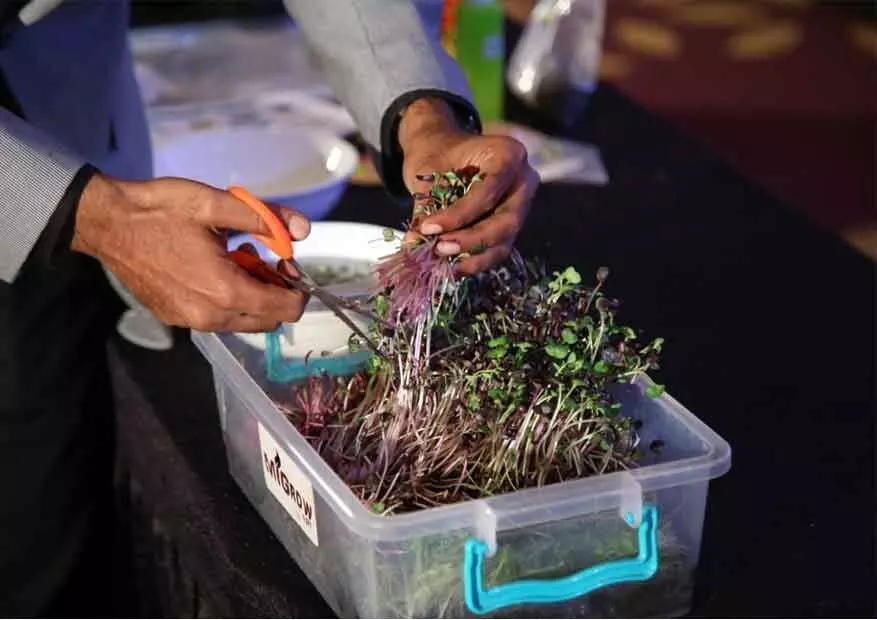Live
- Crucial UN plastics treaty talks begin in South Korea
- PKL Season 11: We're determined to push for top spot in standings, says Puneri Paltan coach BC Ramesh
- Awareness Program on the Harmful Effects of Tobacco Products
- Delhi govt re-launched senior citizen pension scheme despite challenges: Bharadwaj
- Bihar Assembly's winter session begins, three newly elected MLAs take oath
- Inflation to ease, economic growth to accelerate in coming months: Finance Ministry
- Protesters clash with police in J&K’s Katra town
- Senior Bengaluru Police Officer Accused in Suicide of Businesswoman S Jeeva
- Sidhu makes U-turn, says wife underwent cancer treatment along with Ayurveda-based diet
- Demand for entry-level talent surges 59 pc in India’s tech sector
Just In
Eating microgreens for a healthier living

Hyderabad: One of the new trends when it comes to a healthy eating today is the consumption of microgreens which are the seedlings of edible vegetables and herbs. Microgreens are grown in soil, call for sunlight, and are harvested after growing for two to three weeks, when they are a few inches tall.
While microgreens are no substitute for the conventionally grown and consumed vegetables, they are being used to boost health and wellness. Consumers are now preferring to put microgreens in salads, smoothies, and even sandwiches. They can be purchased at various local microgreen farms or grown at home.
Microgreens may contain high concentrations of nutrients compared with mature vegetables and herbs. Because of their high antioxidant content, microgreens are considered a functional food that promotes health or prevents disease. Consuming plant-based foods of all kinds has been linked to a reduced risk of many health conditions, such as obesity, diabetes, heart disease, and high blood pressure. Plant-based foods also support a healthy complexion, increased energy, lower weight, and longer life expectancy.
Speaking to The Hans India, Shilpa Datla, the chairperson of Young FICCI Ladies Organisation (YFLO), said, "Size does matter in some cases, and in case of greens, the micro plants are the ones which have the biggest nutrient punch. The microgreens revolution has been here for some time now, with these are being used in dishes, smoothies and salads to add a dash of flavour. In some species, they are believed to have more nutrients than a full-grown plant." She further talked about the recent workshop which was conducted by Savio Souza, the founder of Green Education Organisation and author of 'Microgreen Health Revolution,' on Tuesday at an event organised by FICCI Ladies Organisation (FLO) and Young FICCI Ladies Organisation (YFLO).
Over a three-hour session, Savio showed how microgreens can be grown at our homes using a kits. Microgreens have 40 times the nutrition of organic vegetables. It is the best way to get your nutrition fix. They contain vitamins C, A, K and E. Today, most of our food is laced with pesticide, and growing these at home can be your first step towards a healthier life.]
Family of microgreens
♦ Radish,
♦ Mustard,
♦ Kale,
♦ Broccoli,
♦ Cauliflower,
♦ Cabbage and many others
How to grow microgreens?
Microgreens can be grown at our homes using a kit. The kit contains four main components: seeds, tray, water and soil. While the seeds need to be pre-soaked in some species, they can be sowed directly for others.
First, fill the tray with a base layer which is made of 60 percent coco peat and 40 percent vermi-compost. This forms 3/4 of the depth of the tray. It is then sprayed with water. Then the seeds form the second layer and a heaped teaspoon amount should be scattered on the base layer. Over-crowding of seeds can lead to fungal diseases.
The third layer is the blanket layer where some soil is scattered on the seeds. They are again sprayed with water. These seeds take around a day to germinate, and at the end of the week, your microgreens will be ready.
It is important to note that the tray should be kept at a shaded spot initially, and only under soft light later on. They should not be exposed to direct, harsh sunlight. In cases where the seeds have to be pre-soaked, it can be done in a glass tumbler and kept overnight in a shaded spot.
How to serve them?
To get rid of pollutants that might have stuck to the greens, wash them in water to which apple cider has been added. Then you can sprinkle some olive oil and serve them.

© 2024 Hyderabad Media House Limited/The Hans India. All rights reserved. Powered by hocalwire.com









